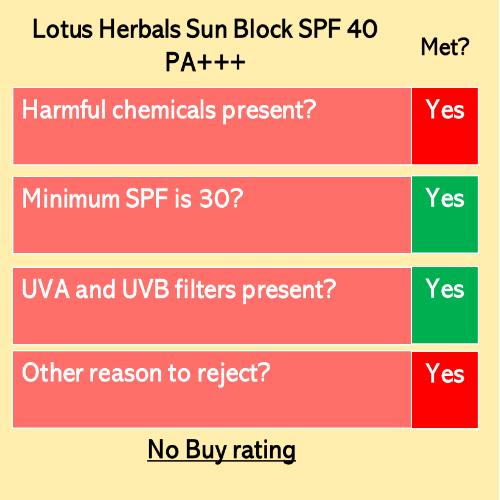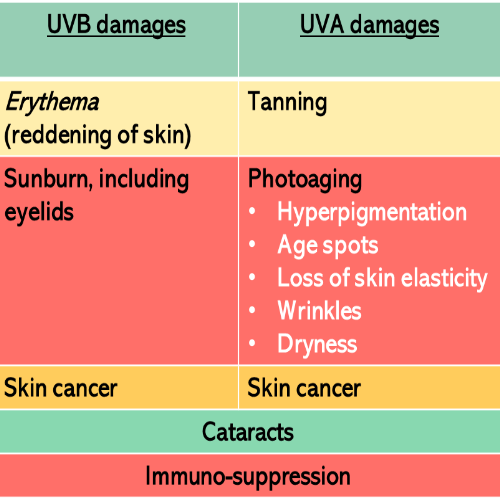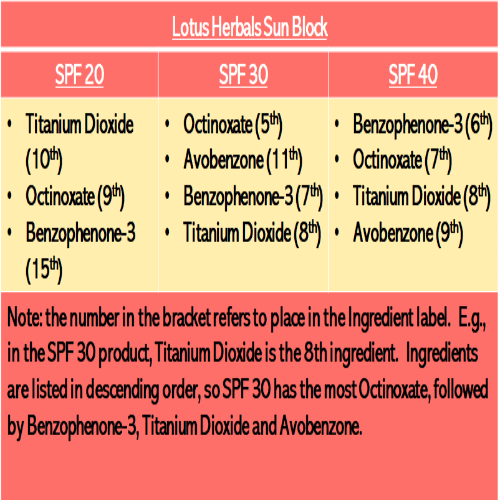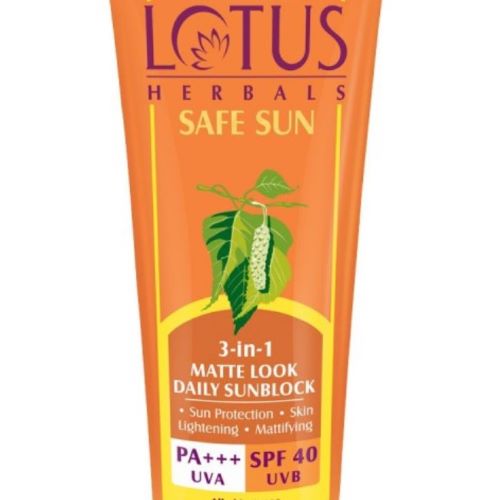
My view: Give it a miss
1. Harmful chemicals present
The first set of harmful chemical present are parabens, which are cheap and effective preservatives. They are also estrogen mimickers and if you are thinking PCOS, then you are not the only one. The second harmful chemical is Oxybenzone, a UVA and UVB filter. This is also a hormonal disruptor and a known skin allergen.
(For more information, see Chemicals to Avoid – Parabens., Chemicals To Avoid – Benzophenone-3)
2. UVA and UVB filters are both present
Both UVA and UVB have both been implicated in skin cancer and photo-aging and we want filters to protect against both types of damage.

UVA and UVB filters protect against the damage caused by UVA and UVB respectively. UVB/UVA filters combine the function of UVA and UVB filters.
2a) Has anything changed from SPF 30 to SPF 40?

The filters are identical in SPF 30 and SPF 40 except their order has changed. The main UVB filter remains Octinoxate (or Octyl Methoxy Cinnamate on the packaging. It’s supported by Titanium Dioxide, an effective UVB absorber and Oxybenzone (or Benzophenone-30, a UVA and UVB filter.
But let’s talk UVA filters instead.
2b) The UVA filter debacle
Lotus Herbals is replicating the same problem with its formula that it had in the SPF 30 sun block.
The primary UVA filter is Butyl Methoxdibenzoylmethane (or Avobenzone), which is a gold standard UVA filter that is notoriously photo-unstable.
Available evidence shows Avobenzone degrades quickly upon exposure to sunlight, reducing its efficacy by as much as 50 and 90 per cent after 60 minutes of exposure.
This product uses Benzophenone-3 (or Oyxbenzone) to stabilise this notoriously unstable UVA filter. Usually you’ll find multiple stabilisers in decent products, but let’s forgive Lotus Herbals for the moment.
Such generosity I hear you say. Well, the product by adding Octinoxate and Titanium Dioxide make Avobenzone photounstable. Also, Octinoxate becomes unstable in this combination.
The study listed below shows that a mixture of Octinoxate (Octyl methoxycinnamate) and Avobenzone shows less absorbance after UV exposure, indicating a photo-unstable formulation.
Therefore, having Avobenzone adds nothing to this product. Click on LINK for more information.
3) Other reasons to reject this product
In addition to the normal cohort of Oxybenzone and Parabens, this product a preservative – Methylisothiazolinone (MI) that no-one should be using in leave-on products.
MI is banned in the European Union (EU) in products, such as sunscreen as its a contact allergen. The EU reached this decision after finding sufficient data in a bunch of European countries that showed not only was MI a contact allergen but also the number of incidences of contact allergy to MI were increasing.
In the US, the status of MI is under review but in 2013, the American Contact Dermatitis Society named in as “Allergen of the Year.”
Closing remarks
That’s it from me. Please drop me a line at email@happyskindays.com if you have any comments or questions.
See also: Top 5 sunscreen recommendations, Do You Understand The Gibberish On Sunscreen Labels?
Sources and uses:
US20170326062A1 (US Patent application pending),
US9956163B2 (Having previously been published, pre-grant publication)
Ceresole, R., Y.K. Han, M.A. Rosasco, et al., “Drug-Excipient Compatibility Studies in Binary Mixtures of Avobenzone,” Journal of Cosmetic Science, vol. 64(5), pp. 317-328, 2013.
Nash, J.F., and P.R. Tanner, “Relevance of UV Filter/Sunscreen Product Photostability to Human Safety,” Photodermatology, Photoimmunology and Photomedicine, vol. 30(2-3), pp. 88-95, 2014
Wendy E Roberts, Lily I Jiang, and James H Herndon, Jr, “Facial primer provides immediate and long-term improvements in mild-to-moderate facial hyperpigmentation and fine lines associated with photoaging” Clin Cosmet Investig Dermatol. 2015; 8: 471–477.
